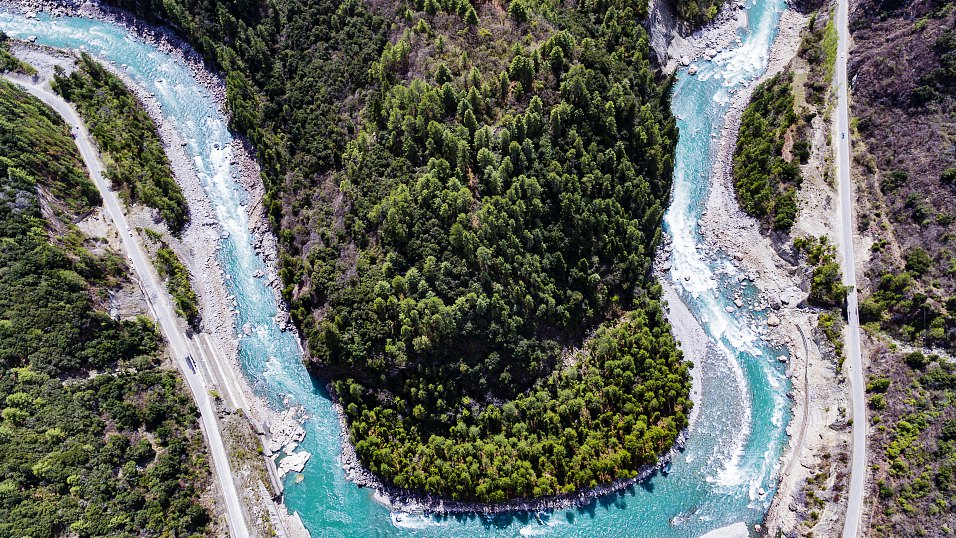Hailed as the "roof of the world" and the earth's "third pole," the Qinghai-Tibet Plateau is an essential ecological protection barrier for China. However, due to harsh climate conditions and lack of oxygen, the ecology on the world's highest ground is rather delicate and vulnerable, and land desertification is just one of its reflections.
According to the Fifth National Desertification and Sandification Monitoring Report, the desertified land area in Tibet Autonomous Region reaches 43.25 million hectares, accounting for 35.98 percent of the national territorial area of China. The sandy land area in Tibet also amounts to 21.58 million hectares.
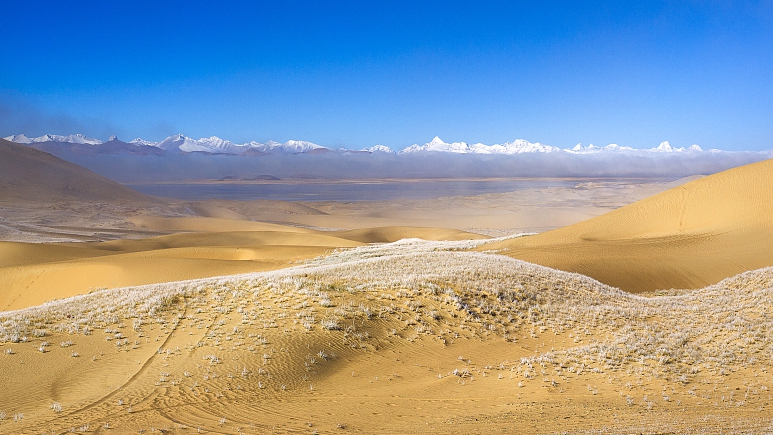
The Payang desert in Shigatse in southwest China's Tibet autonomous region. /VCG Photo
The Payang desert in Shigatse in southwest China's Tibet autonomous region. /VCG Photo
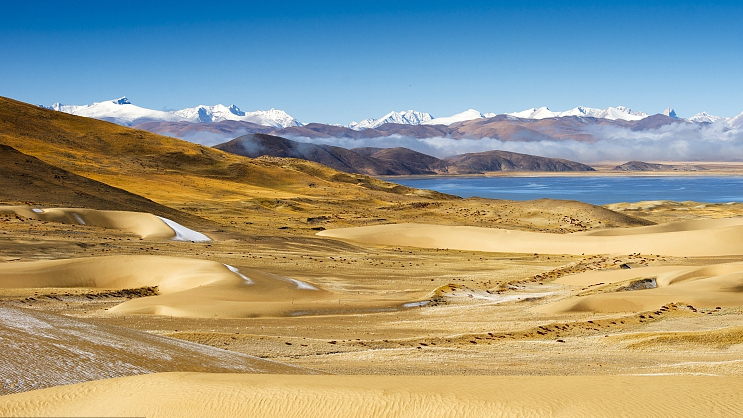
The Payang desert. /VCG Photo
The Payang desert. /VCG Photo
To combat desertification in Tibet, conserve vegetation and plant trees are the primary measures used in Shannan, Nagqu, Ali, Shigatse and some other areas.
Why it is hard to plant trees in Tibet?
Most forests in Tibet Autonomous Region grow in the eastern regions, like Nyingchi and Qamdo, where the altitude is comparatively lower. The forest can hardly be seen at the altitude above 4,500 meters. The woody plant Tibetan juniper growing at the altitude of 2,600-4,800 meters may mark the highest elevation treeline in the world.

The pine and cypress forests along the river in Nyingchi in southwest China's Tibet autonomous region. /VCG Photo
The pine and cypress forests along the river in Nyingchi in southwest China's Tibet autonomous region. /VCG Photo
Planting trees on the high altitude areas like Nagqu and Ali demand great efforts. Nagqu prefecture once was the only treeless city in China. The blizzards blowing from October to May make the sapling hard to take root. Many locals who inhabit eastern Nagqu have hardly seen a tree in their life until recently.
In Nagqu, the natural vegetation is mainly the grass-like herb of Kobresia genus. The alpine meadow and sand gravel can preserve few moisture and fertility for plants. There are just two months a year suitable for plants to grow. The trees planted in the spring may easily die in the winter due to the low temperature and occasional frost.
What are trees living on the plateau?
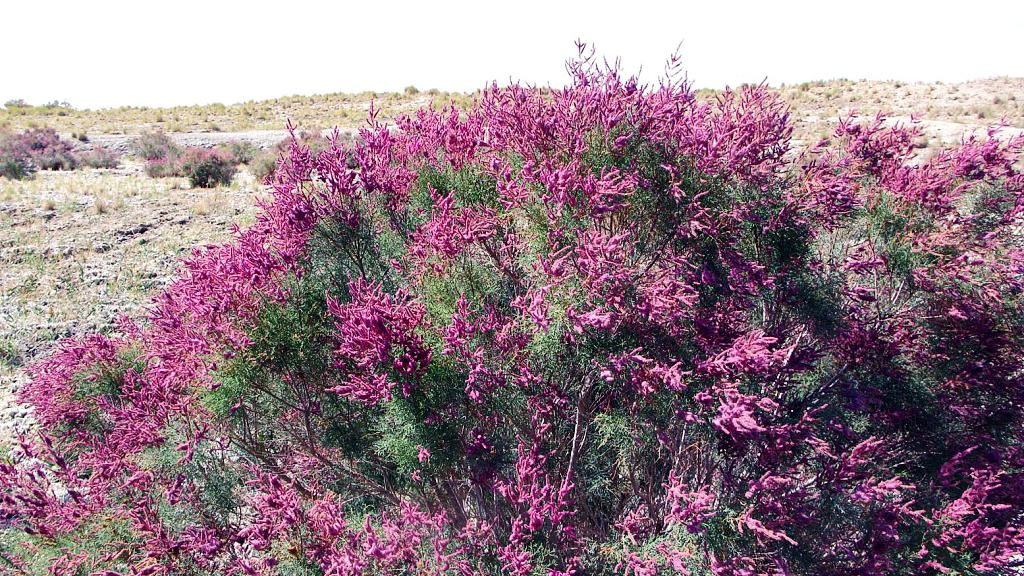
The salt cedar in northwest China's Qinghai Province. /VCG Photo
The salt cedar in northwest China's Qinghai Province. /VCG Photo
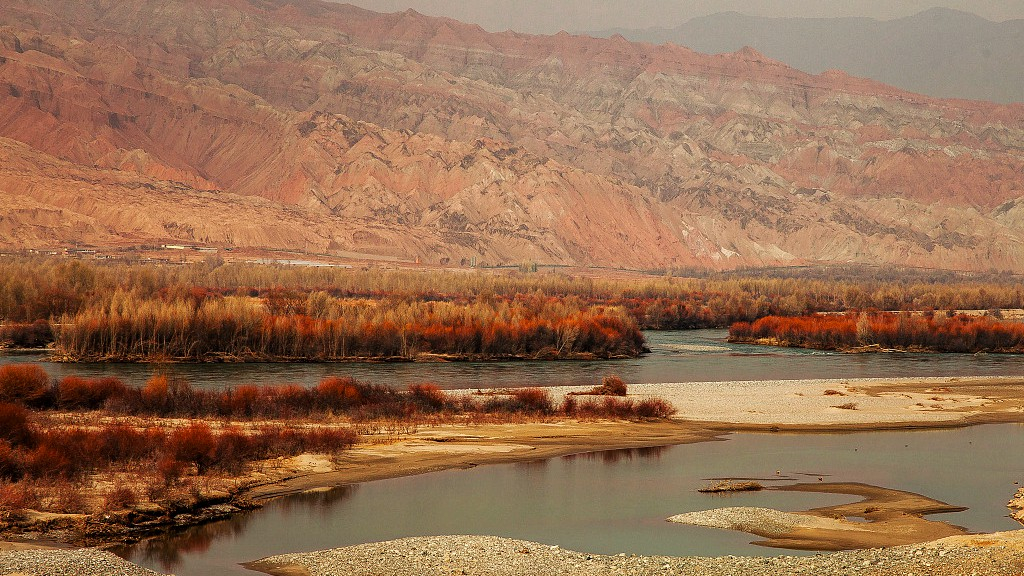
The salt cedar forest in northwest China's Qinghai Province. /VCG Photo
The salt cedar forest in northwest China's Qinghai Province. /VCG Photo
Despite all of the challenges like intense ultraviolet radiation and permafrost, some trees still pass the test of natural selection and survive here. The reddish salt cedar, known as the tree closest to the sun, is one of them.
The salt cedar is a vigorous and hardy shrub that can tolerate sandy soil. Its roots can grow to the length of over 30 meters. The pinkish flowers bloom from late summer to early autumn, which embellishes the plateau with more colors.
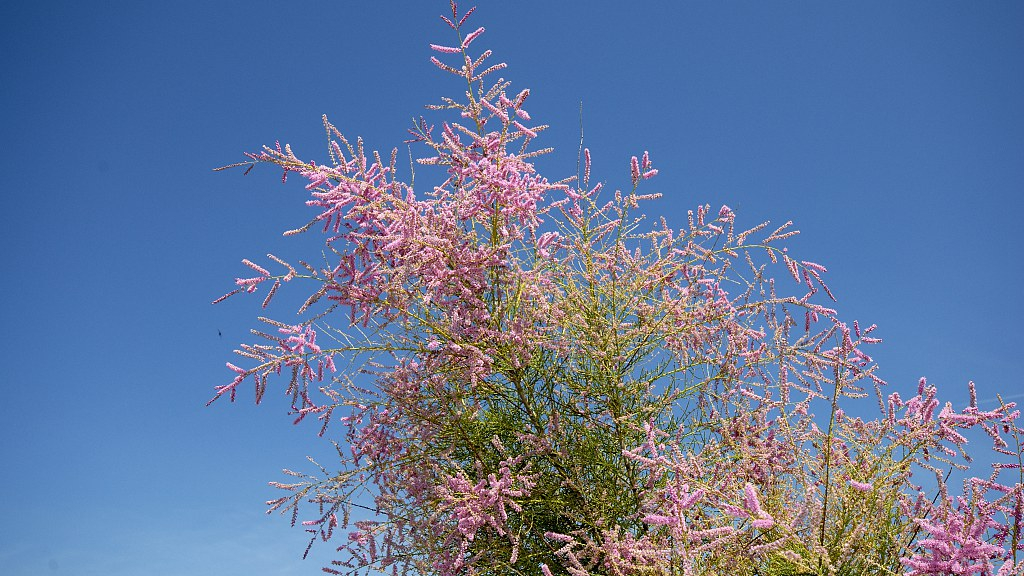
Salt cedar flowers in France.
Salt cedar flowers in France.
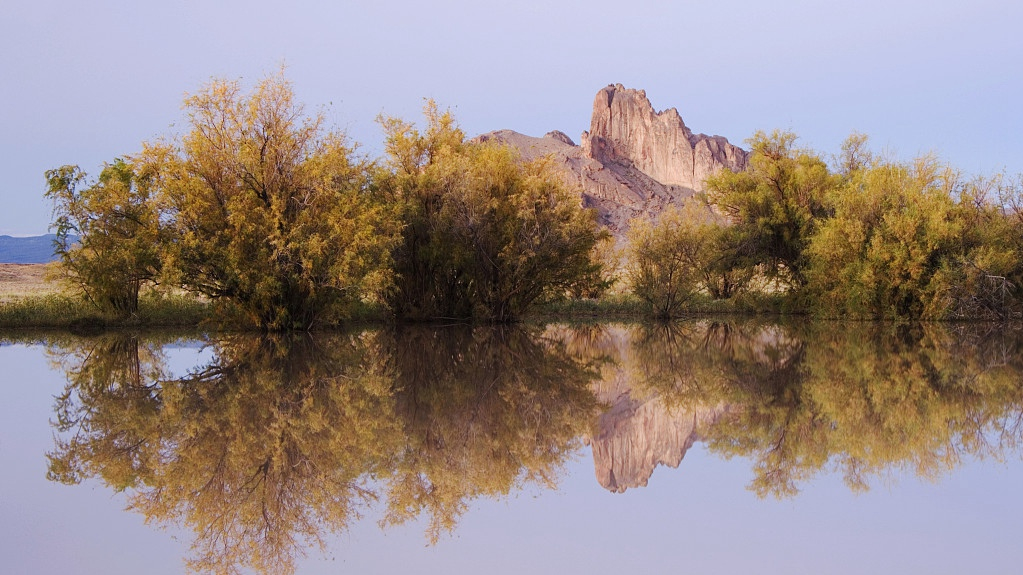
The Rocks with salt cedars in New Mexico, U.S. /VCG Photo
The Rocks with salt cedars in New Mexico, U.S. /VCG Photo
The large area of reddish salt cedar thriving near Shiquan River in Ga'er county in Ali prefecture used to be one of the few types of trees there until 2016. Since late 2016, promoted by the Ministry of Science and Technology and the local government, Yili Groups has taken the research task of planting trees at high altitude areas.
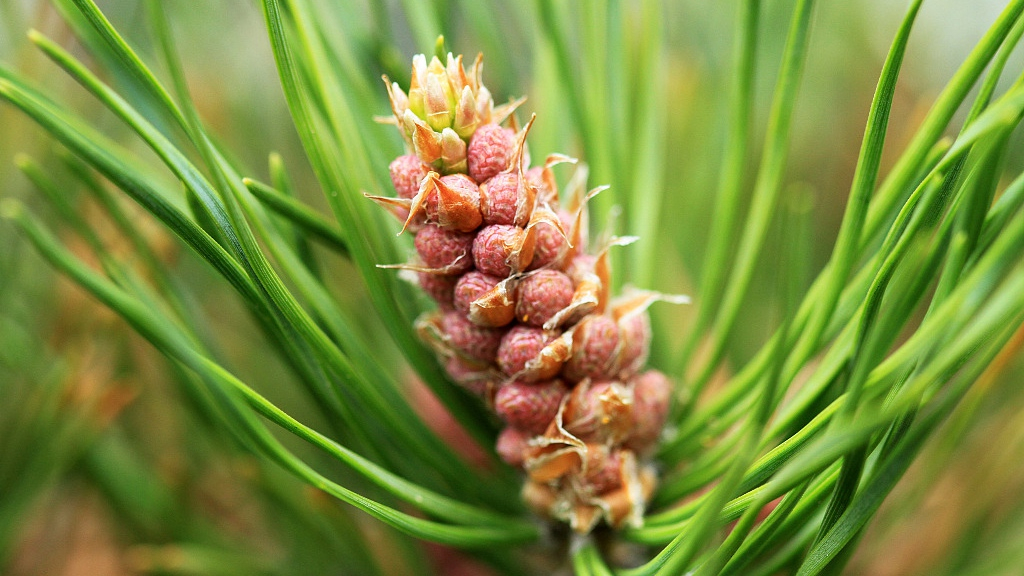
The Mongolian pines (Pinus sylvestris var. mongolica). /VCG Photo
The Mongolian pines (Pinus sylvestris var. mongolica). /VCG Photo
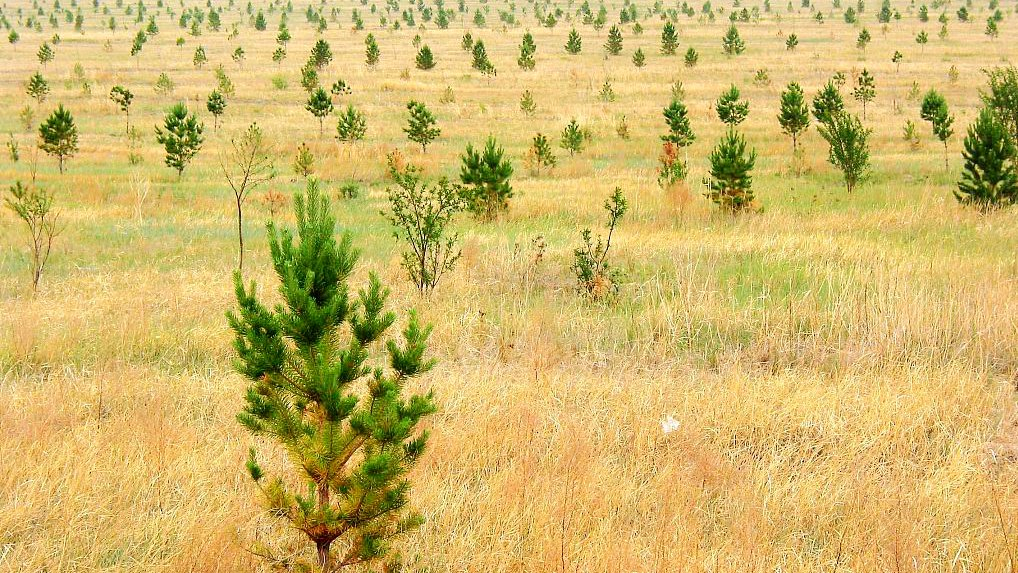
The Mongolian pines are planted to combat desertification in Hulun Buir City, Inner Mongolia Autonomous Region, north China. /VCG Photo
The Mongolian pines are planted to combat desertification in Hulun Buir City, Inner Mongolia Autonomous Region, north China. /VCG Photo
Trees like Mongolian pines, Russian olive, and savin junipers are thus introduced from regions with similar climate conditions to prevent sand. Spruce and sea buckthorns are also selected because of their resistance to cold, drought and alkaline soil.
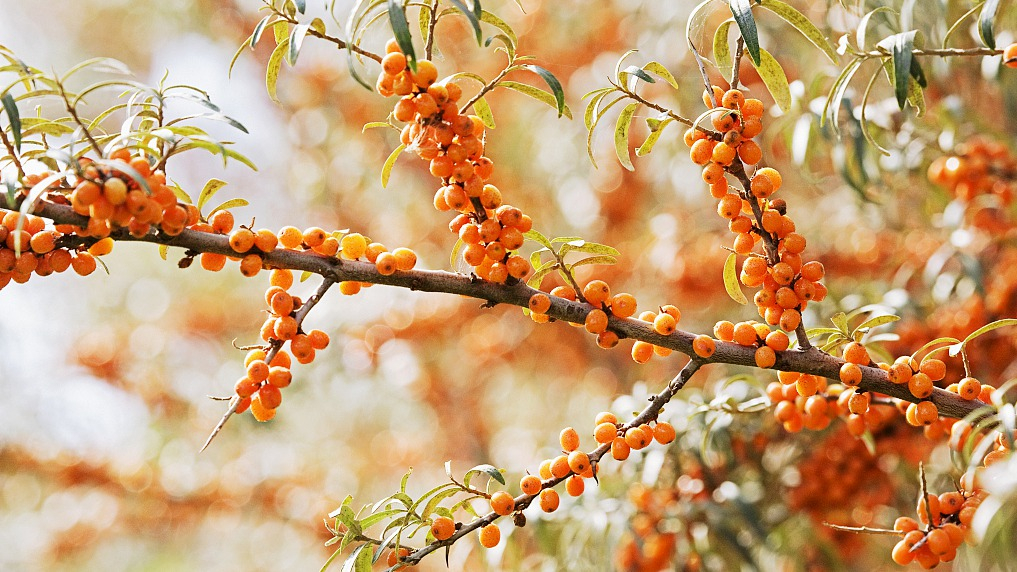
Sea buckthorn. /VCG Photo
Sea buckthorn. /VCG Photo
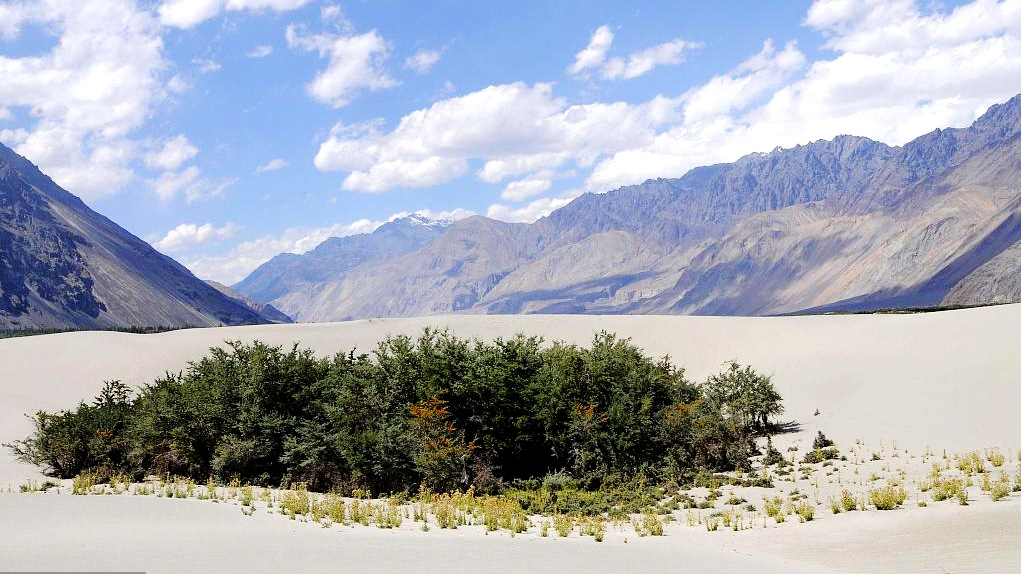
A river dune landscape with common sea buckthorn in India. /VCG Photo
A river dune landscape with common sea buckthorn in India. /VCG Photo
In 2018, over 420,000 Qinghai poplars and some other types of trees are newly planted and thrive with a survival rate of 85 percent in Shiquanhe town in Ali. According to the local forestry department, 11 million trees are planted over the years, which prevents the sand and greatly improves the ecological environment there.
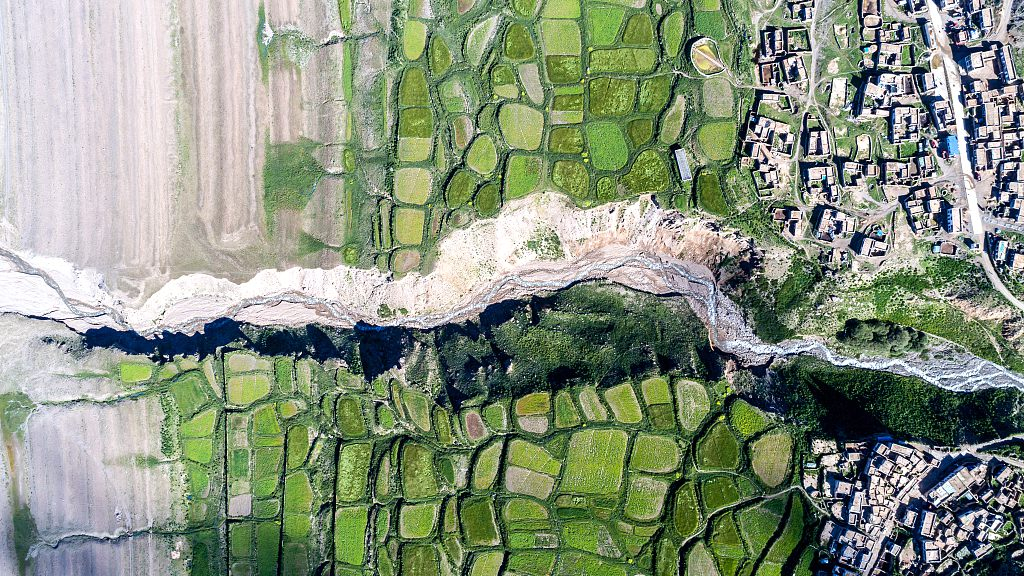
The aerial view of Ali in southwest China's Tibet autonomous region. /VCG Photo
The aerial view of Ali in southwest China's Tibet autonomous region. /VCG Photo
What are the achievements over the years?
Recently, Tibet has carried out the "five-eradication" action plan, namely, "eradicating treeless towns, treeless villages, treeless yards, treeless households, and treeless areas." Currently, 863 villages at an altitude below 4300 meters end the treeless history.
In 2018, Tibet invested 10.7 billion RMB in environmental protection funds, with 74,133 hectares of trees planted and forest coverage rate rising to 12.14 percent. The government aims to increase 260,000 hectares of planted forests, which would make the forest coverage rate reach 12.31 percent.

Famers are walking in Ali in southwest China's Tibet autonomous region. /VCG Photo
Famers are walking in Ali in southwest China's Tibet autonomous region. /VCG Photo
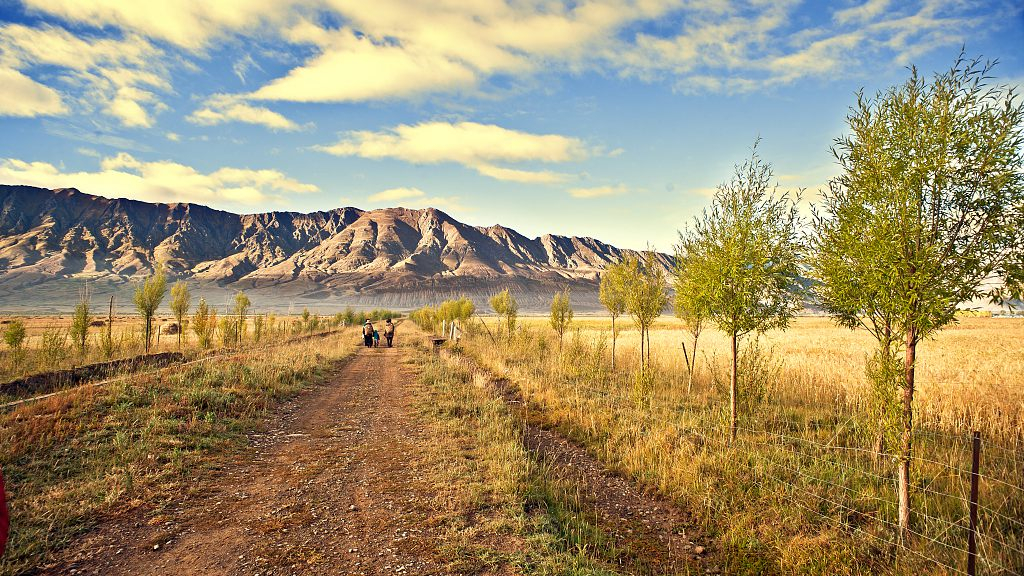
Trees in Ali in southwest China's Tibet autonomous region. /VCG Photo
Trees in Ali in southwest China's Tibet autonomous region. /VCG Photo
(Cover image: The aerial view of Nyingchi in southwest China's Tibet autonomous region. /VCG Photo)
(If you want to contribute and have specific expertise, please contact us at nature@cgtn.com.)

